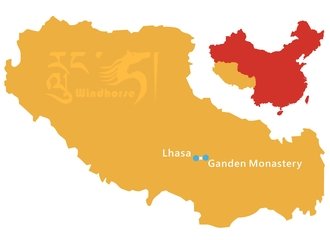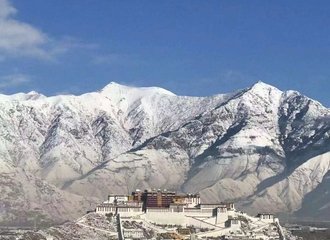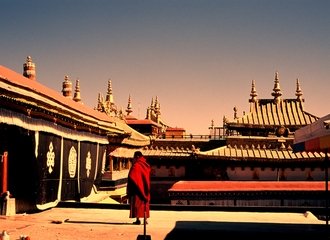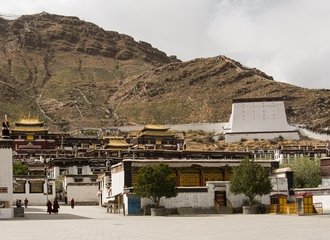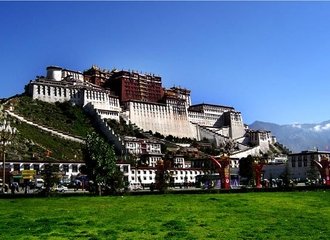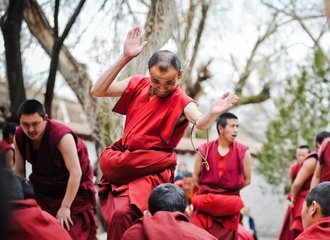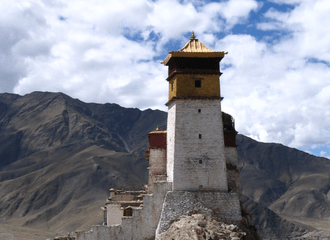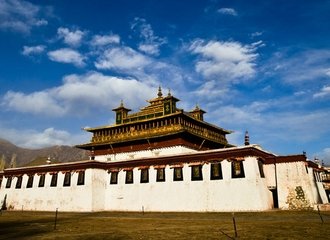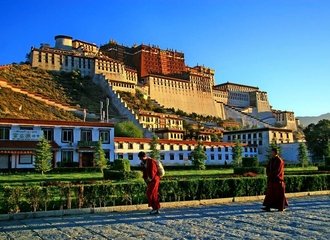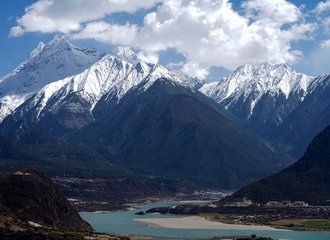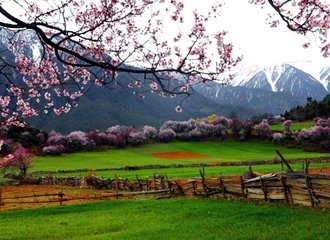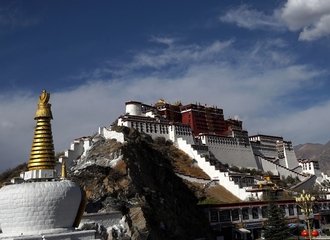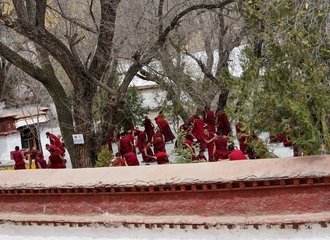Ultimate travel guide to Sichuan Tibetan Region

Where is Sichuan Tibetan Region
Apart from the whole Tibetan Autonomous Region (TAR), the Tibetan-inhabited region stretches to most of Qinghai province, southwest of Gansu province, northwest of Yunnan province, as well as north and west of Sichuan province. On the vast Tibetan-inhabited land, culture is varied in different areas, due to inconvenient transportation and long distances. However, they all have the same belief - Tibetan Buddhism. Sichuan Tibetan Region corresponds approximately to Garze Tibetan Autonomous Prefecture located in western Sichuan and Aba Tibetan Autonomous Prefecture located in northern Sichuan. Unlike the Tibetan Autonomous Region (TAR), where foreign travelers’ movement is controlled, with Tibet permit required. The Sichuan Tibetan Region provides a lot more freedom to explore the Tibetan plateau and interact easily with locals, without any special permit required.
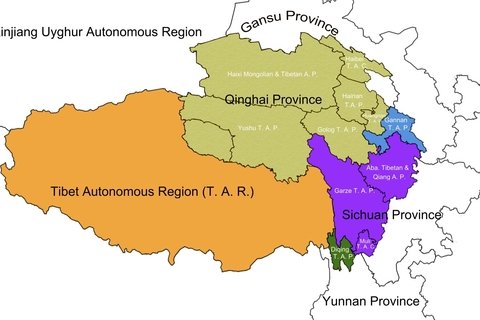
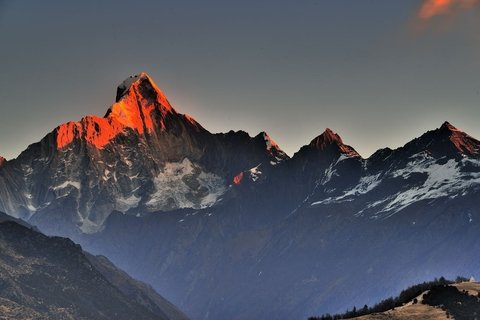
Covering 151,078 square kilometers (58,332 sq mi) with about 880, 000 population, Garze Tibetan Autonomous Prefecture is the second-largest Tibetan-inhabited area in China, preceded only by the Tibetan Autonomous Region (TAR). As the heartland of Kham region, it is always inspiring countless domestic and overseas travelers to capture at the photography heaven, trace the utopia Shangri-la described by James Hilton, embrace sightseeing on National 317 road, visit the Tibetan Buddhist monastery clusters, drop by the most beautiful Tibetan village, and do outdoor adventures like climbing, hiking.
Covering 83,201 square kilometers (32,124 sq mi) with about 919,987 population, Aba Tibetan Autonomous Prefecture is the second Tibetan-inhabited area in Sichuan. Owning the most famous Jiuzhaigou National Park as well as other 42 World Heritages, it provides tourists an ideal ecotourism destination to explore extraordinary natural wonders, savor the unique culture and history, roam in the unequaled high-altitude grasslands, hike in the magnificent mountains and valleys.
There are so many things to do in the Sichuan Tibetan Region which should not be missed for their Sichuan tour, let’s get started with the below.

Best time to travel to Sichuan Tibetan Region
Well, it is a bit hard to tell when is the best time to travel to the Sichuan Tibetan Region, as there are a thousand Hamlets in a thousand people’s eyes. It really depends on what you want to see. Here we share each season’s features as below, to help you decide when is your best time to travel to the Sichuan Tibetan Region.
Spring (mid-March to May) is the best time to appreciate the flower blossoms overspreading the valley in Danba and Jinchuan, while the rest of the Sichuan Tibetan Region is still covered by snow with frigid temperatures.
Summer (June to August) is the best time to experience the nomad Tibetan life in Langmusi, to admire the unique Khampa Tibetan culture in Litang, with green grassland and mild temperatures. However, July and August are considered as the rainy season in Tibetan plateau, which obstructs trekking or hiking, and the road can be blocked sometimes with landslides.
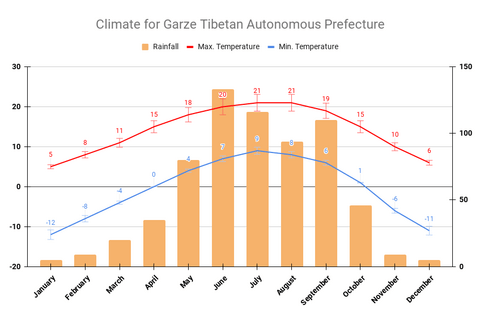
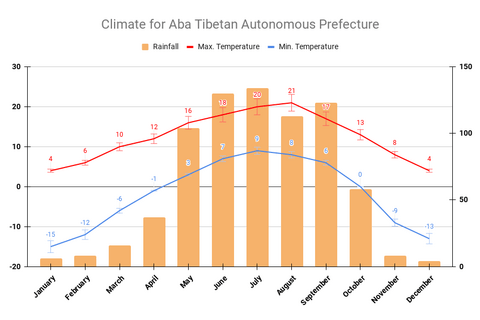
Autumn (September to early November) is the best time to capture the stunning colorful view in Jiuzhaigou National Park, Yading Nature Reserve, etc. Besides, it is also a good time for an adventure tour, like trekking, hiking or mountaineering, with pleasant weather and generally clear and blue sky.
Winter (mid-November to early-March) is the best time to savor the beauty of Hailuogou Glacier, Dagu Glacier, etc, and take part in traditional festivals in Tibetan plateau, such as the Monlam Festival in Aba Tibetan Autonomous Prefecture. During the period, various religious activities will be held with Thangkar unfolding. However, the temperature in both Garze and Aba can be crazy cold, which can easily reach -25 ˚C or lower by the night.

What to see and do in Sichuan Tibetan Region
Yading Nature Reserve
Yading Nature Reserve is nestled in Daocheng county of Garze Tibetan Autonomous Prefecture. As a holy land for Tibetans, it puts three sacred mountains together, with clean crystal lakes, plunging glacial gorges, and alpine meadows. Reputed by “the Last Pure Land on our Blue Planet'', it maintains the pure scenery that is nearly extinct on the earth, with unique landforms and primitive natural landscape. It was first discovered by the American explorer Joseph Rock. Later, what is now Yading Nature Reserve was made known to the global by the British best-selling novelist James Hilton’s inspired depiction in his novel “The Lost Horizon”. Even today some Westerners still believe that this place is the legendary "Shangri-La''. The best times to visit the Yading Nature Reserve are May to June and September to mid-October.
Exploring Danba Tibetan Villages
Danba is a county located in the east of Garze Tibetan Autonomous Prefecture. Danba Tibetan Villages are the most distinctive Jiarong Tibetan Villages. Among all Tibetan villages, Zhonglu village, Jiaju village, and Suopo village are the best-preserved, with original architecture and primitive lifestyles retained. Ranked at the top of the “most beautiful villages in China” selected by “Chinese National Geographic”, Danba Tibetan Villages offers a picturesque countryside view. It is also an idyllic spot to participate in unique Tibetan farm life in a local homestay.

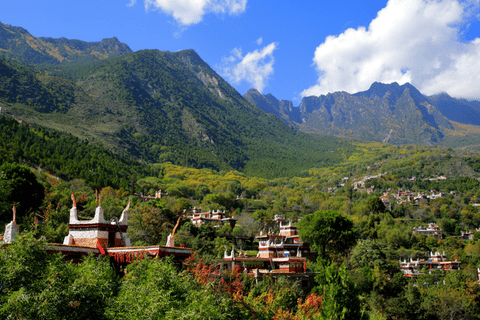
Trekking or Horse-riding at Tagong
Tagong is a picturesque small town located in Kangding city of Garze Tibetan Autonomous Prefecture. Established around the Tagong Monastery, Tagong is a nice Tibetan settlement, with magnificent sacred Yala Snow Mountain accompanied. And the endless grassland area around it is called Tagong Grassland, which offers wonderful hiking across the grassland to very authentic villages, and horse-riding to get an appreciation for the pristine landscape. The best times to visit Tagong are April to June and September to early-October.
Taking Hot-spring at Hailuogou Glacier Park
Hailuogou Glacier Park is located on the eastern slope of Mount Gonggar in Luding County of the Garze Tibetan Autonomous Prefecture. Glaciers in Hailuogou are known as one of the lowest glaciers in the world, which are distinctive modern marine glaciers. Apart from the glaciers, Hailuogou also features virgin forests, the ice lake, hot springs under the cover of snow and ice, as well as the sunrise and sunset over Mount Gongga. The best times to visit Hailuogou Glacier Park is winter (from December to March) and Autumn (from September to November).
Participating Litang Horse Racing Festival
At an altitude of 4,000m, Litang county of Garze Tibetan Autonomous Prefecture is one of the highest in the world, sitting at the edge of vast Maoya Grassland. Among all horse racing festivals in the Sichuan Tibetan Region, the horse racing festival held generally the first week in August in Litang county is the most celebrated holiday for Khampas from all over the Tibetan-inhabited region. It was a particularly special part of the traditional kora event held by Ganden Thubchen Choekhorling Monastery, on every 3rd day of June in Tibetan calendar when the Maoya grassland turns greenest with blossom flowers. Therefore, the Litang City People's Association organized a grand horse race. In addition to horse racing, the festival also offers Tibetan operas, dances, and other traditional activities. Do not miss out on this opportunity to gain an insight into the distinct Tibetan customs and culture!
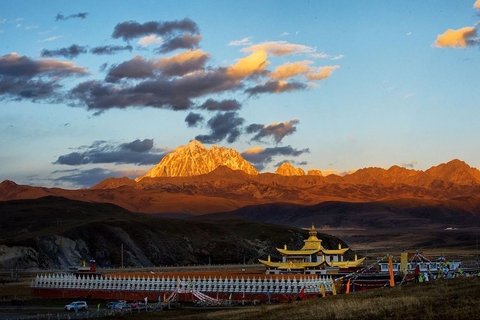

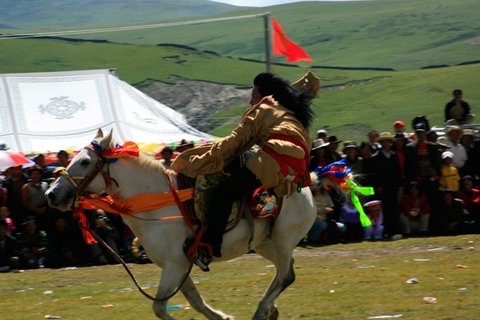
Dege Parkhang Sutra-Printing House
Dege is a small county seat in a high valley in Garze Tibetan Autonomous Prefecture, where the treasured Dege Parkhang Sutra-Printing House is hidden. Being admired as the “Encyclopedia of Tibetan Culture”, it houses the enormous number of Tibetan woodblocks on the planet. Coming to the top among the “Three Great Printing Houses in Tibetan Areas”, followed by those at Potala Palace and Labrang Monastery, Dege Parkhang Sutra-Printing House provides a particular gaze of the traditional woodblock printing process.
Dzogchen Monastery
Dzogchen Monastery, located in Dege County of Garze Tibetan Autonomous Prefecture, is one of the six great monasteries of the Nyingma sects of Tibetan Buddhism. Dzogchen means "Great Perfection" in the Tibetan language because the monastery is the cradleland of great perfection practiced in the Vajrayana Buddhist tradition. Hidden in the charming valley and surrounded by verdant grassland hills, Dzogchen Monastery is a natural sacred land for spiritual seekers, with a profound Buddhist history as well as alive teaching and practice of the “Great Perfection”. While it provides the Meditation Retreat Center for Tibetan monks and nuns practice and retreat, the guest accommodation is usually available for visitors.
Jiuzhaigou National Park
Jiuzhaigou National Park is a nature reserve located in Jiuzhaigou County on the edge of the Aba Tibetan Autonomous Prefecture. Being declared as a UNESCO World Heritage Site, Jiuzhaigou is a fascinating fairyland, features emerald lakes, majestic waterfalls, the colorful forest, snow-capped peaks, the blue ice and Tibetan villages. The beauty of Jiuzhaigou National Park lasts in all seasons with different views. Especially in autumn (early October to early November) the best time to visit Jiuzhaigou National Park, it has become an amazing oil painting drawn by nature, with red maple trees, golden-yellow birch leaves, orange sumac, and dark red fruit.
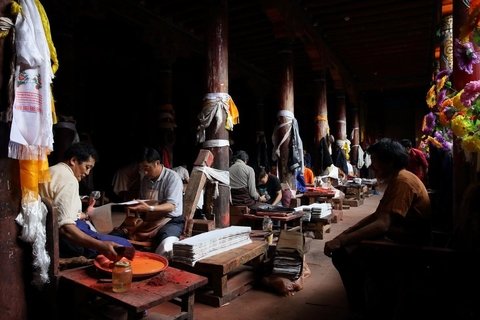
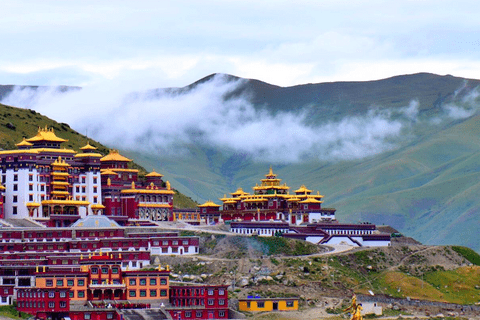
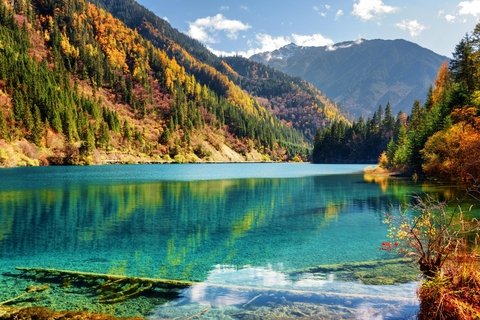
Huanglong National Park
Huanglong National Park is located in Songpan County of Aba Tibetan Autonomous Prefecture. Being famed for “Heavenly Lake”, Huanglong National Park is famous for terraced colorful calcified pools, magnificent snow peaks, winding mountain gorges, and primeval forests. Apart from the travertine landscape, diverse forest ecosystems can be found here, as well as waterfalls and hot springs. Many endangered animals also live in this area, including giant pandas and Sichuan golden snub-nosed monkeys. The best time to visit Huanglong National Park is Summer and Autumn (June to November) because the water is little on the pools in spring, and the park is closed for maintenance in winter.
Mount Siguniang
Mount Siguniang is located in Xiaojin County of Aba Tibetan Autonomous Prefecture. “Siguniang” means four girls in Chinese, and Mount Siguniang got its name from the four peaks: Dafeng (Big Sister Peak), Erfeng (The Second Sister Peak), Sanfeng (The Third Sister Peak) and Yaomeifeng (The Fourth Sister Peak). Apart from the four snow-capped peaks, the surrounding three valleys, namely Shuangqiao Valley, Changping Valley, and Haizi Valley, are also gifted with stunning natural landscapes with lakes, forests, meadows, and creeks. Honored as the “Oriental Alps”, Mount Siguniang is the paradise for mountaineering, trekking, and photography.
Wolong Panda Center
As part of Wolong National Nature Reserve, the Wolong Panda Center, also called Shenshuping Panda Base is located in Wenchuan County of Aba Tibetan Autonomous Prefecture. It was built and put into use from Oct. 30, 2012, to replace the Hetaoping Panda Center which was damaged by the Wenchuan Earthquake. Housing over 50 wild giant pandas, Wolong Panda Center, is an ideal place to watch wild giant panda’s living habits, and it also offers an opportunity for panda enthusiasts to take care of pandas in the worthwhile Panda Volunteer Program. Compared with the Panda Base in Chengdu, Wolong Panda Center is always with fewer tourists.
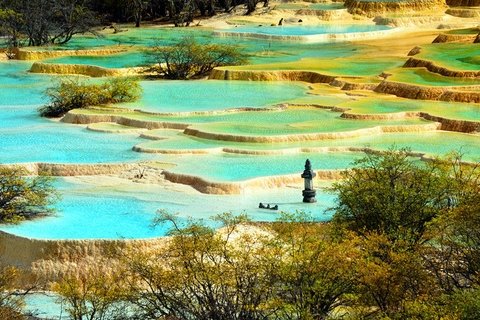
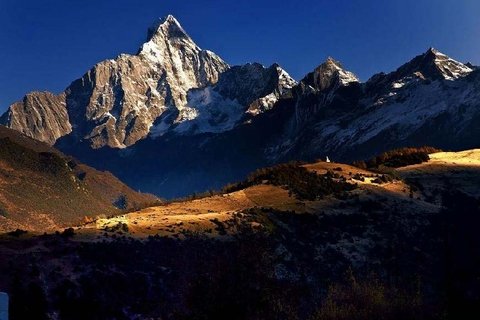
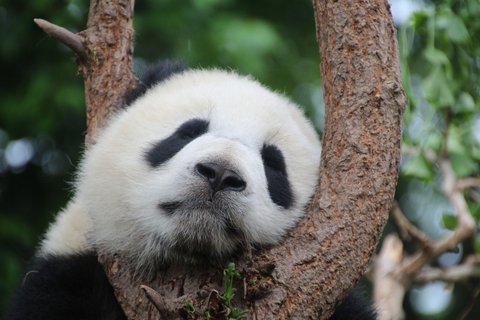
Dagu Glacier
Dagu Glacier is located in Heishui County of Aba Tibetan Autonomous Prefecture. Its highest point is over 5,000 meters, with snow-covered all year round. Among all snow-capped peaks, the three outstanding glaciers, namely No.1 Glacier, No. 2 Glacier, and No.3 Glacier composed the core sightseeing area with blue lakes scattered, like the gemstones decorated in a crown. As the youngest glacier, which is also the closest one to the city, it offers a spectacular view of the glacier, a bird-view for the snow-capped mountains from its cable car, a pleasant path in the picturesque forest with encountering monkeys, and a particular experience for a cup of coffee at the world’s highest cafe sitting on the top of Dagu Glacier.
Horse-riding to Langmusi Nomad Family
Langmusi is a small town located on the border of Aba Tibetan Autonomous Prefecture in Sichuan and Gannan Tibetan Autonomous Prefecture in Gansu. Nestled in a splendid valley with winding mountains and spacious forests surrounded, Langmusi boasts two great Buddhist monasteries, namely Kirti Monastery on the Sichuan side and Sertri Monastery on the Gansu side. Besides, superb hiking/horse trekking is the main reason why people are inspired by Langmusi. Going through the traditional and authentic Tibetan nomad area, staying in a Tibetan nomad family, allows you to learn more about real-life on the Tibetan plateau.
Mountaineering, Hiking and Trekking
The Sichuan Tibetan Region is the paradise for mountaineering, hiking, and trekking, with plenty of remarkable mountains and canyons. For mountaineers, Mount Siguniang offers an expedition to the summit of Dafeng [5,355m] and Erfeng [5,454m], which takes 6-7 days. Of course, you don’t have to climb mountains, Mount Siguniang also offers decent trails in Changping Valley and Haizi Valley for moderate hiking, which takes 2-3 days. In addition, the 5-7 days trekking at Mount Gongga (Minya Konka) and 3-4 days trekking at Mount Yala are also favored by those who love outdoor adventures.
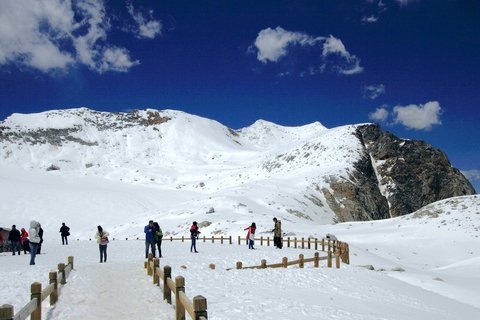
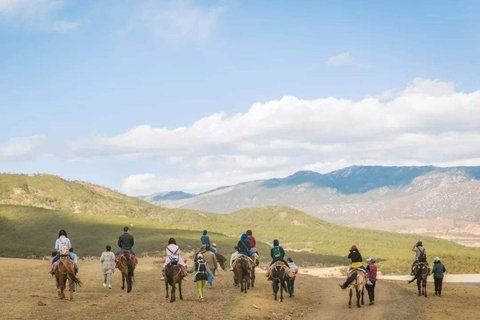
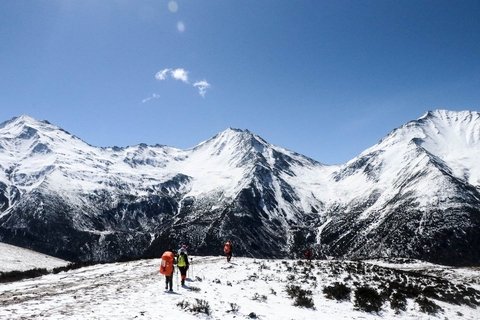

How to reach Sichuan Tibetan Region
There are two options to reach the Sichuan Tibetan Region, by road or flight. However, once you arrive in the Sichuan Tibetan Region, land travel is the only way to travel in the region.
Generally speaking, most travelers planning to visit the Sichuan Tibetan Region by road are coming from Chengdu, the capital of Sichuan province. There are also travelers coming from Shangri-la in Yunnan province or Xining in Qinghai. To enjoy the enchanting and breathtaking Tibetan plateau view of Garze and Aba, the best way is traveling by several people with a private car with/without a guide through a local China travel agency. For backpackers, there are a few public buses to the cities in the heart of Garze or Aba. However, a private car is far more flexible and enjoyable, which takes you deeper into the plateau than a public bus can.
For those travelers who are short of time, a flight will be a good choice to reach the Sichuan Tibetan Region. There are three airports in Garze Tibetan Autonomous Prefecture, namely Kangding Airport [4,238m] in Kangding city, Yading Airport [4,411m] in Daocheng county and Gesar Airport [4,068] in Garze county. There are two airports in Aba Tibetan Autonomous Prefecture, namely Huanglong Airport [3,448m] in Jiuzhaigou county and Aba Hongyuan Airport [3,535m] in Hongyuan county. Because all airports are on the high plateau, the risk of getting altitude sickness is much higher than an overland tour.

Recommended tour and itineraries for Sichuan Tibetan Region
Situated between Sichuan Basin and Qinghai-Tibet Plateau, Sichuan Tibetan Region is a hidden gem for jaw-dropping beauty and traditional Tibetan culture. Whether you have five days, ten days, or three weeks, the Sichuan Tibetan Region has all to fulfill your desire and interests to do adventure Sichuan tours.
Travelers could spend 3 days just exploring Jiuzhaigou and Huanglong National Parks for the crystal clear lakes and undulating calcified pools. If they have got more time, we would highly suggest exploring the verdant Zoige Grassland and then continuing on to have a horse-riding or just nomad-life experience at Langmusi. Check out the 6 days Jiuzhaigou, Langmusi horse trekking and nomad life tour for more details.

For travelers who are eager for hiking at the picturesque scenery mixed with snow peaks, lakes and forests, with a visit to the Tibetan’s dwelling houses, the 9 days Yala Snow Mountain and Siguniang Valley trekking can be a fulfilling experience.
For those who have long enough days, we would recommend spending more days in the Sichuan Tibetan Region to explore the hidden treasures. This 21 days Tibet Kham culture and nature overland travel from Chengdu to Lhasa is perfect for photographers, Tibetan culture enthusiasts, and adventure lovers who also wish an overland tour to Tibet Autonomous Region.
If you want to add a few of your own twists to above itineraries, please contact us directly to plan out your favored stops and find more possibilities.

Accommodation and food in Sichuan Tibetan Region
The accommodation condition has already been improved in the Sichuan Tibetan Region, especially in the cities or counties where are often visited by domestic tourists, such as Kangding, Daocheng, Jiuzhaigou where you can even expect 5-star standard hotels. There are also all grades for choice, from lodges/hostels to Tibetan family inns and standard business hotels, ranging from CN¥ 200-500. However, in remote areas or trekking/hiking areas, there are only guesthouses or camping available, which charge reasonable prices around CN¥ 100 for a bed or tent.
In the Sichuan Tibetan Region, many restaurants in larger cities serve Sichuan cuisines (ranging from CN¥ 20-80 per dish) which feature hot and spicy flavor, as well as authentic Tibetan cuisines (ranging from CN¥ 10-70 per dish), such as tsampa, dried yak meat, mutton soup, buttered tea, barley wine, yogurt, and cheese. Western dishes and fast food (ranging from CN¥ 20-90, such as pizza and fried yak or chips, can also be found in the big city like Kangding. Nevertheless, restaurants in far-off towns only serve Sichuan cuisines or traditional Tibetan dishes. For travelers who can not eat spicy food, or for those vegetarians, vegetable dumplings and noodle soups are the easiest and cheapest to come by.

Useful travel tips
- When entering the Sichuan Tibetan region, travelers are stepping on an average altitude of 2,500m, which is already high enough for some people to have altitude sickness. If you travel further to a higher mountain or plateau, it’s more likely to cause acute mountain sickness. It is highly recommended to travel with an experienced local guide instead of traveling alone. Walk slowly, drink more water, and keep warm from catching a cold. Travelers can also take some medicines like Tibetan herb Hongjingtian or Diamox prior to departure, which may help prevent the occurrence of altitude sickness. For more details, please read over how to avoid high altitude sickness.
- Please prepare some cash if you plan to travel further to the remote areas from the big cities like Kanding or Daocheng. Because credit cards, especially international credit cards are not acceptable in remote areas, and there are few places to exchange money.
- Most Tibetans don't mind having their picture taken, however, it is always appropriate to ask for permission first.
- Natives in Sichuan Tibetan Region have their devotion to their religion and culture, which is the same as the Tibetan Autonomous Region. Your respect and caution in their religion and traditions will be highly appreciated.
- Unlike the monasteries in the Tibetan Autonomous Region, which charge about CN¥ 30-100 for admission, and don’t allow photography inside the monastery or with a few cases that photography is allowed with a fee charged. Most monasteries in the Sichuan Tibetan Region are free of charge for visitors and allow a quick photo inside the monastery with permission.


